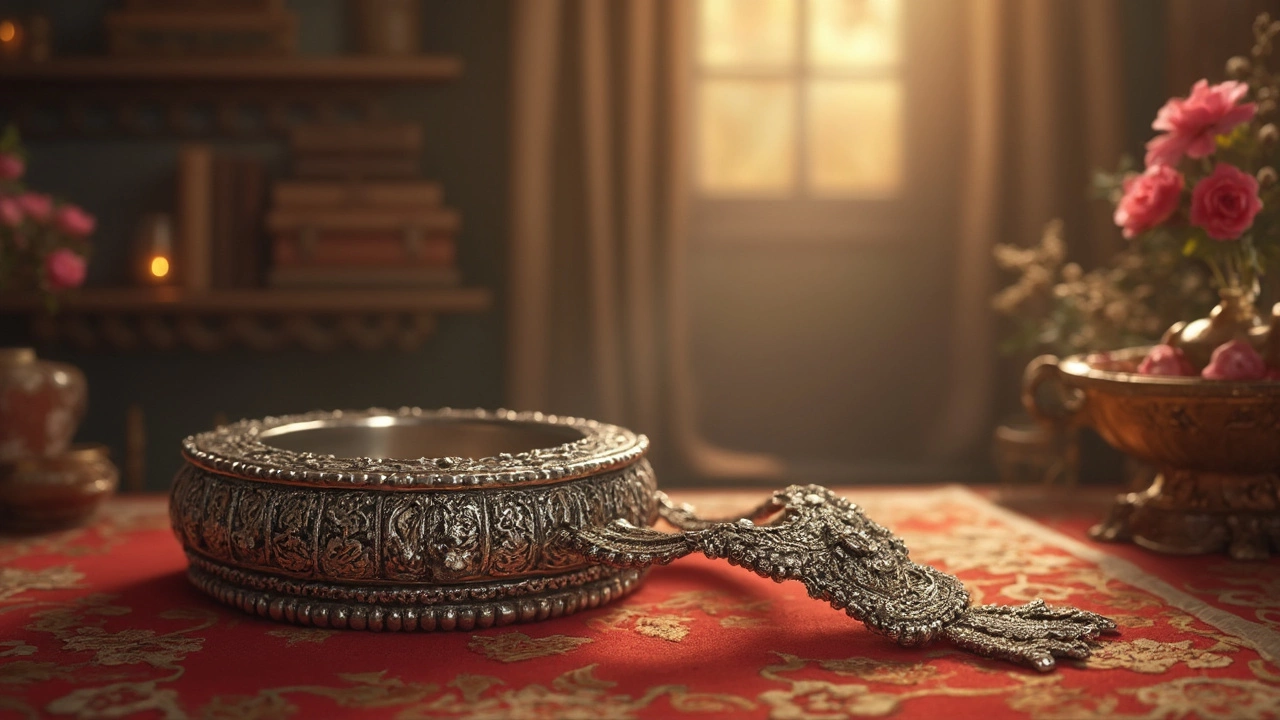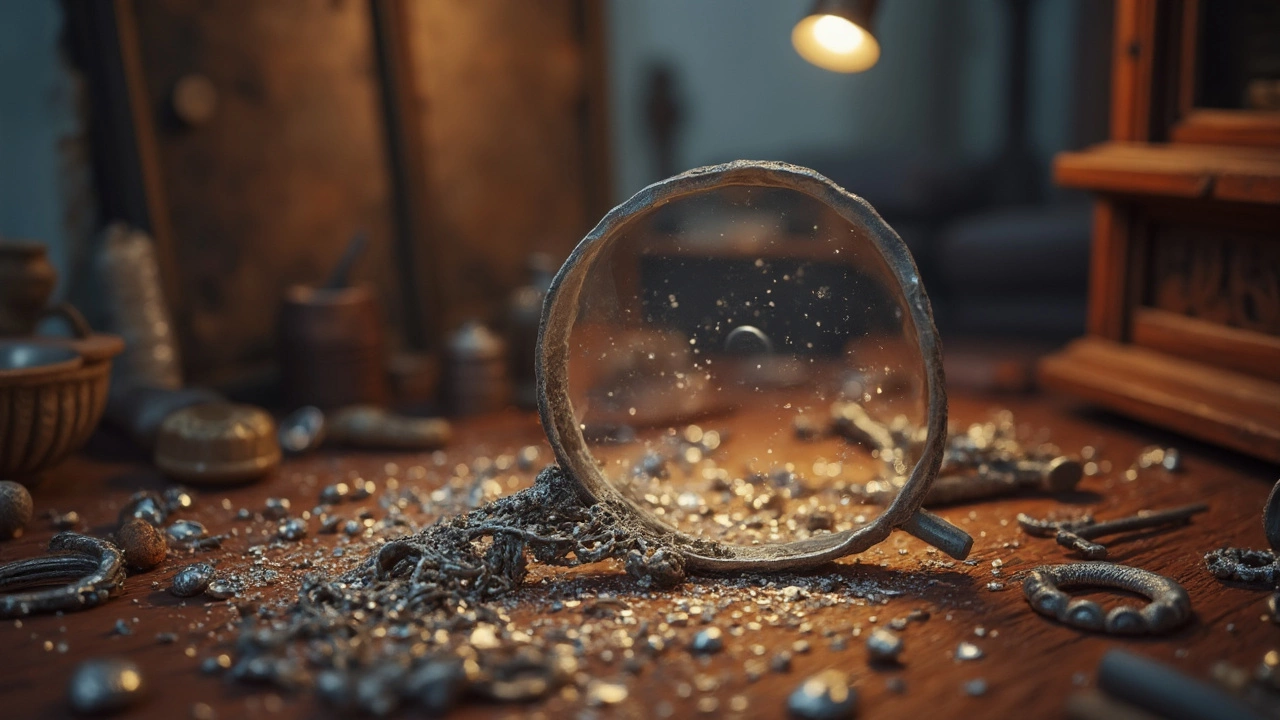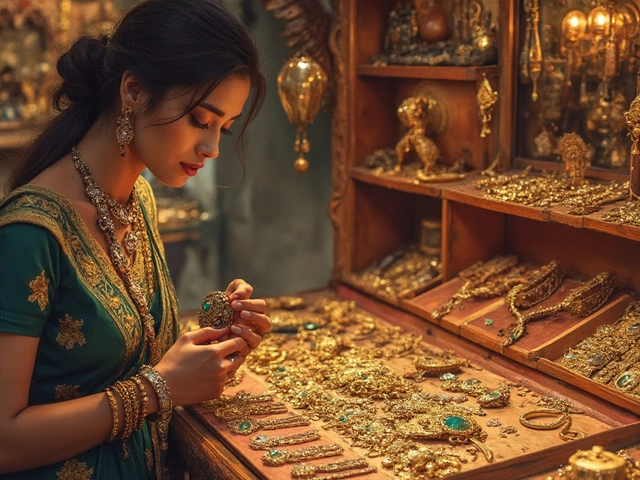
If you've ever come across a piece of jewelry stamped with '825,' you might have paused, wondering what this mysterious number represents. It's not as commonly discussed as 925, but it has its own unique significance in the world of jewelry. Let's unravel this little mystery.
The '825' mark typically indicates that the piece is made from a type of silver alloy. Specifically, it contains 82.5% silver, combining it with other metals to enhance durability. It’s not pure silver, but often, that's the point—it’s crafted to last while retaining that lovely silver sheen. This percentage of silver makes it softer than other alloys like sterling silver, but it also means the artisanship might involve more creativity in design due to the malleability.
So why choose an 825 marked piece? Sometimes it’s simply about appreciation for unique crafts. Builders of 825 silver pieces over the years have relied on creativity to make stunning designs while working with the softer alloy. These factors often make 825 jewelry desirable among collectors.
- Origins of the 825 Mark
- Understanding Silver Purity
- Differences from Other Silver Markings
- Detecting Authenticity and Value
- Care Tips for Silver Jewelry
- Where to Find Antique 825 Jewelry
Origins of the 825 Mark
Understanding where the '825' mark comes from gives us valuable insight into the history of antique silver jewelry. This stamp is somewhat unique and less common compared to other silver markings, such as the well-known '925' that signifies sterling silver. The use of the '825' mark primarily originates from regions with distinct standards for silver purity compared to places like the U.S. and the U.K.
In parts of Europe, particularly during the early to mid-20th century, silversmiths crafted jewelry using 825 silver to combine aesthetic appeal with affordability. This was a practical way to produce beautiful pieces during times when economic constraints were a real concern. It allowed craftsmen to maintain a level of quality while keeping costs down, thus making it accessible to a wider audience.
Additionally, the choice of 82.5% silver metal content was sometimes influenced by the natural resources available. Some areas had an abundance of mixed metal deposits, leading artisans to adjust their mixtures. This wasn’t just about economy; it also opened the door to creative expressions that formed the unique antique jewelry designs we admire today.
Interestingly, as global trade expanded, the concept of silver purity began to standardize. Countries started to establish consistent marking practices, yet these region-specific jewelry pieces retained their charm and continue to be appreciated in the collector markets.
Parts of Eastern Europe and Asia Minor also contributed to the spread of the '825' mark, particularly in the Balkan regions, where historical jewelry traditions widely embraced silver's versatility. It's fascinating to see how cultural and economic factors influenced silver use, shaping what collectors seek today.
Understanding Silver Purity
When we talk about silver jewelry, terms like 925 and 825 pop up, but what do they actually mean? These numbers relate to the purity of the silver, which is key in determining the value and characteristics of an item.
Purity Standards Explained
The number '825' indicates that the jewelry is comprised of 82.5% silver, with the remaining 17.5% made up of other metals like copper. This is slightly less silver content compared to the more well-known sterling silver which is marked with '925', meaning it has 92.5% silver content.
Here's a simple way to think about it: the higher the number, the more silver the item contains, and potentially, the higher the value. But it's not just about the numbers. The mix of metals also plays a part. Alloys like 825 jewelry might not have the same status as sterling silver, but they offer unique design opportunities thanks to the added flexibility of the metals involved.
Why Use Silver Alloys?
Pure silver, while beautiful, is pretty soft, making it a bit impractical for everyday jewelry since it can easily scratch or bend. By mixing silver with other metals, you get durability without sacrificing too much of that alluring silver shine.
| Silver Mark | Silver Content | Common Use |
|---|---|---|
| 925 | 92.5% | Sterling Silver |
| 825 | 82.5% | Antique and specialty designs |
Whether choosing antique jewelry or modern designs, understanding these numbers can help you make better choices when buying, ensuring you know exactly what's in your jewelry box and why it's special.
Differences from Other Silver Markings
When diving into the world of silver jewelry, you'll quickly find that not all silver is created equal. The numbers you find stamped on each piece tell a story of its composition and quality. Understanding these numbers can make a huge difference, especially when evaluating antique jewelry.
Silver Purity Numbers
Most people are familiar with the '925' mark, which signifies sterling silver. This means the piece contains 92.5% pure silver, with the rest being other metals like copper to give it strength. It's a standard for high-quality silver jewelry, known for its durability and shine.
On the other hand, our friend '825' is lesser-known but definitely worth knowing about. The 825 jewelry mark shows that the piece is composed of 82.5% silver. It’s slightly less pure than sterling, but still holds a significant place in jewelry collections, especially for its bespoke designs that might not always adhere to the sterling silver standard.
Other Common Marks
- 800: This is often found on older European pieces. It's 80% silver and, like 825, is commonly used in intricate, softer designs.
- 950: This indicates a higher silver content than sterling (95% pure), usually found in more premium pieces.
- 999: This is often called fine silver, representing almost pure silver. It’s usually too soft for jewelry but cherished by collectors for its purity.
Each of these silver jewelry markings comes with its own history and affinity in specific regions or types of craftsmanship. Knowing these differences, the numbers become more than just figures; they turn into an insight into the item's background and origins.

Detecting Authenticity and Value
When it comes to buying antique 825 jewelry, knowing how to spot authentic pieces is key. It’s not just about walking into a store and picking something shiny. You want to make sure you're getting the real deal, especially if you're investing in something vintage.
Look for the Markings
Start by examining the jewelry for the elusive 825 jewelry mark. This indicates the silver content. If you're unsure, a magnifying glass can help reveal fine details. Often, the hallmark is tiny and requires a keen eye. That's your first clue to authenticity.
Check for Consistency
Look for consistency in craftsmanship. Real 825 pieces show uniform quality in their design, giving clues about their origins and the care taken in crafting them. If you spot anything that looks off—for example, abnormal seams or poorly finished edges—it might be a warning sign.
Consult the Pros
Getting a professional appraisal can be a good move. Jewelers have the tools to verify silver content and assess quality. They'll check for things like corrosion, which can affect value, and use specific tests to confirm the silver purity. It might cost a bit, but their expertise can save you from a costly mistake.
Value Indicators
- Age: Older pieces, especially those from known periods, often hold more value.
- Design: Unique, well-crafted designs can increase a piece’s worth.
- Maker: Some brands or jewelers add significant value with their name alone.
Once you've vetted the authenticity, measuring the item's value is next. Collectors often focus on provenance—knowing the item's history can give it an added layer of value. And remember, the silver jewelry market can fluctuate, so staying informed helps.
Care Tips for Silver Jewelry
Looking after your silver jewelry, especially those unique 825 jewelry pieces, ensures that they remain in top condition for years. While silver can naturally tarnish over time, with a bit of attention, you can keep it shining like new.
Regular Cleaning
Silver loves to gleam, but pollutants and moisture can dim its shine. To bring back the sparkle, gently clean your pieces regularly. Use a soft, lint-free cloth to wipe away oils and dirt. For a deeper clean, create a mild solution of warm water and a bit of dish soap:
- Mix a few drops of dish soap in warm water.
- Dip a soft cloth into the solution.
- Gently rub the silver jewelry.
- Rinse with cool water.
- Dry thoroughly with a soft towel.
Storing Tips
Where you store your antique jewelry can make a huge difference. Keep items in a cool, dry place, away from direct sunlight. Consider placing them in an airtight bag to minimize exposure to air. You might even toss in a piece of chalk or a silica gel packet to absorb moisture.
Avoid Harsh Chemicals
Certain chemicals can harm silver. Avoid direct exposure to household cleaners, perfumes, or lotions. Always remove your jewelry when cleaning, swimming, or using any products containing alcohol or acids.
Professional Polishing
Sometimes a professional's touch is needed. Have your collection professionally polished once a year. Silver jewelry experts know how to handle various alloys and can bring back the original luster without damaging the piece.
Table: Chemical Risks for Silver Jewelry
| Chemical | Impact on Silver |
|---|---|
| Chlorine | Can cause pitting and weaken the metal |
| Ammonia | May cause light corrosion |
| Sulfur | Leads to tarnishing over time |
These are some simple steps, but if you follow them, your antique jewelry designs will thank you. Remember, a little care goes a long way in preserving beauty and value.
Where to Find Antique 825 Jewelry
Hunting down antique 825 jewelry can be a thrilling adventure. It's not like grabbing a pair of socks from your local store; you need to know where to look. The quest often starts at reputable antique shops. These stores usually pride themselves on sourcing authentic and unique pieces, so you're more likely to stumble upon rare finds.
Online Marketplaces
Online platforms like eBay or Etsy are treasure troves for vintage jewelry enthusiasts. They offer a wide array of silver jewelry, and with a quick search using '825,' you might just discover the piece of your dreams. Keep in mind, however, to check seller reviews and ratings to ensure you're buying from someone reputable.
Local Auctions and Estate Sales
Think about attending local auctions and estate sales. Here, you get to physically examine the jewelry up close, which is a big bonus. Plus, there's the excitement of bidding and potentially snagging an exquisite piece at a bargain price!
Flea Markets and Antique Fairs
Don’t overlook flea markets and antique fairs. Sellers often bring hidden gems that may not be as appreciated in their everyday shop. You can find 825 jewelry pieces at these venues and maybe even learn the interesting history behind them from the vendors.
| Source | Pros | Cons |
|---|---|---|
| Antique Shops | Verified authenticity, unique finds | Potentially higher prices |
| Online Marketplaces | Convenient search, wide selection | Risk of buying from unreliable sellers |
| Auctions | Hands-on inspection, potential bargains | Competitive bidding |
| Flea Markets | Unexpected discoveries, face-to-face dealings | Quality varies |
Whether you're visiting a brick-and-mortar shop or browsing online, remember to trust your instincts and validate the authenticity when possible. Bring along a magnifying glass for those up-close inspections at flea markets or fairs—you never know what might catch your eye!


